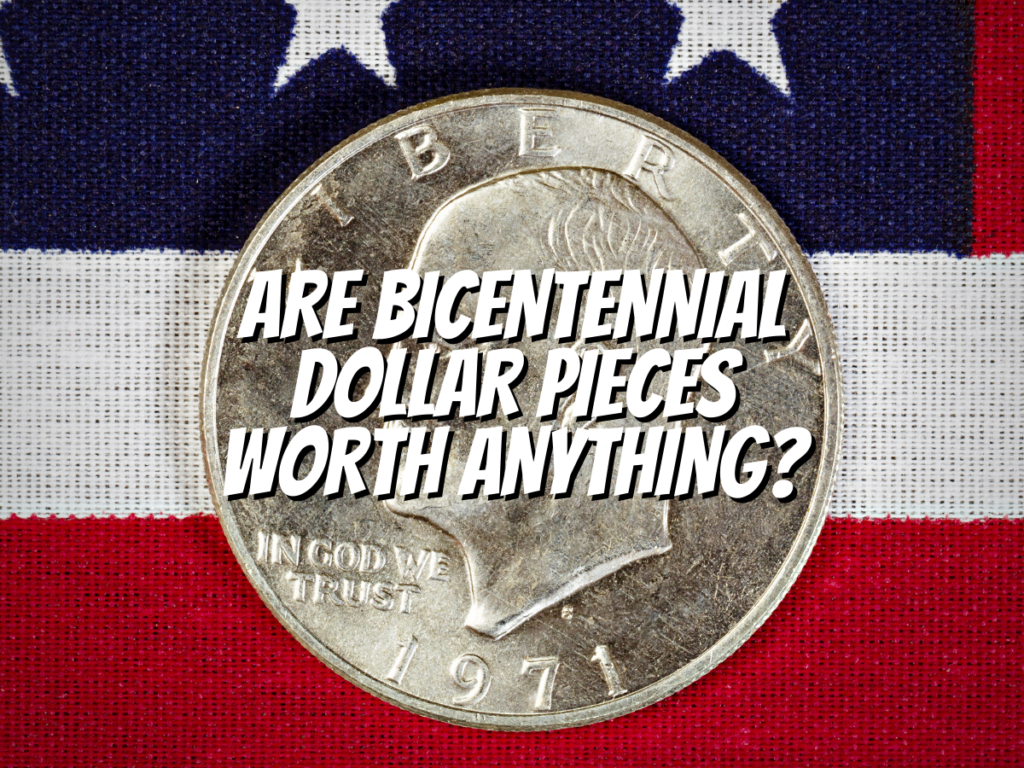The Bicentennial Dollar is a silver coin that celebrates the 200th anniversary of the United States Constitution.
The Mint released these coins as part of its commemorative series, and in this article, we’ll take a closer look and identify if they are worth anything!
What are we waiting for? Let’s dive right in!
Are Bicentennial Dollar Pieces Worth Anything?
The simple answer is yes they do.
Well, you see, clad cupronickel coins possess a rather modest melt value, but their value to collectors is quite high.
Based on the current price of silver, silver coins have a melt value ranging from $19 to $24.
Wow, you can get as much as $850,000 in high grades for a single silver dollar!
Bicentennial Dollars Overview
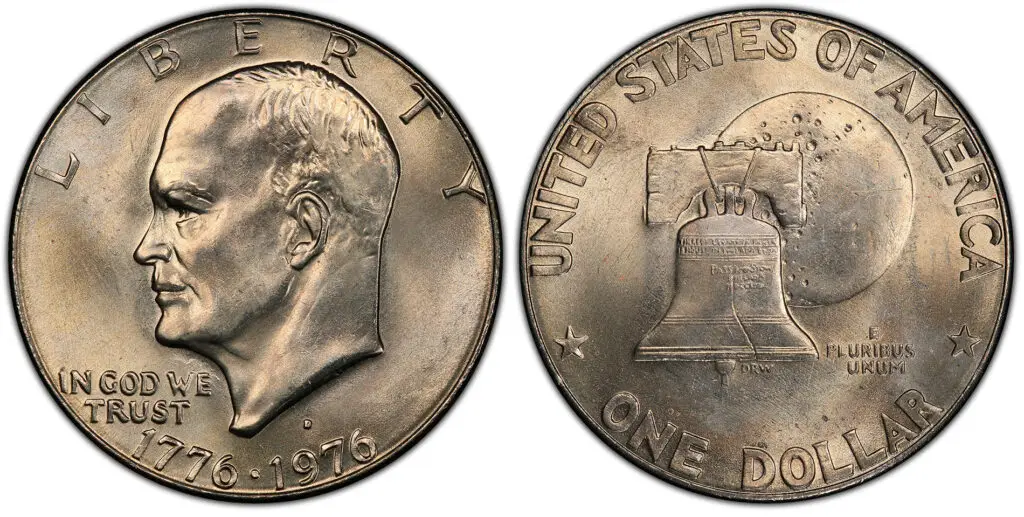
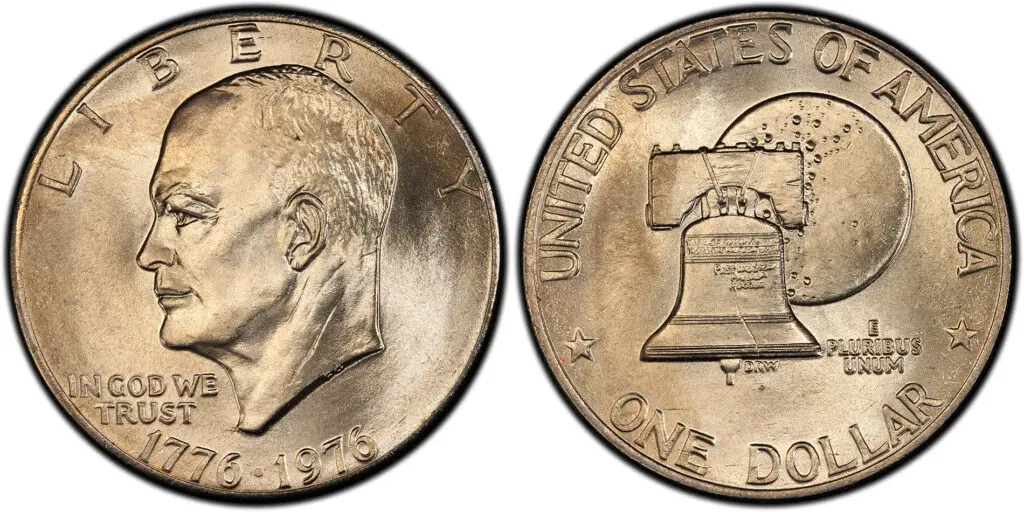
So, in 1976, the US had its 200th Independence Day, and the United States Mint decided to organize a competition to revamp the commemorative coins for $1, 25c (a quarter), and 50c.
The prize for this competition was a whopping $5,000, and the winner of the $1 reverse design was Dennis R. Williams!
Well, how much is a 1776 to 1976 silver dollar worth?
Well, the price range can vary quite a bit.
Some have gone for as little as $20, while others have fetched as much as $850,000!
Nowadays, even the most uninformed citizen is aware of reselling.
Thanks to shows like Pawn Stars and Antiques Roadshow, we’re all becoming more cautious about grandma’s vases and grandpa’s cigar box.
Even back then, we knew that anniversary coins were collectible, so the bicentennials were a big hit.
The Eisenhower Dollar coins, also known as large dollars, are quite popular.
On the obverse side, we have Dwight Eisenhower, also known as Ike, featured on this coin.
The 34th President of the United States.
You’ll find the moon and the Liberty Bell on the other side.
It can be said that Americans generally prefer dollar bills over dollar coins.
This preference is so strong that the US Mint has ceased production of circulation dollar coins since 2011.
Since then, we only offer them in collectible editions.
So, if you’re looking for a dollar coin made after 2012, you’ll have to head over to the Mint.
You can still order rolls of earlier $1 coins from any bank, and you may find collectible treasures hidden in those stacks.
Between 1971 and 1978, all one-dollar coins featured Ike on the front.
The bicentennial dollars were unique because they had the moon and bell reverse, plus dual dating on the obverse.
All bicentennial coins, including the 1776 to 1976 dollars, were minted from 1975 to 1976.
However, it’s worth noting that none of these coins feature the 1975 date.
The Ike dollars were clad in copper-nickel. So, the coin comprised 75% copper and 25% nickel on the outside, with a copper core.
This means that the overall composition of the coin was 91.65% copper and 8.33% nickel, and the alloy made up the outer 1/3 of the coin.
People didn’t fancy them due to their size, but they were immensely popular among slot machines and tables in casinos.
So, in addition to those coated dollar coins, the Mint also produced collector’s coins composed of 40% silver and 60% copper.
Ike dollars, both silver and clad, are often found in uncirculated condition due to their sturdy construction and minimal usage.
Common Flaws in Bicentennial Coinage
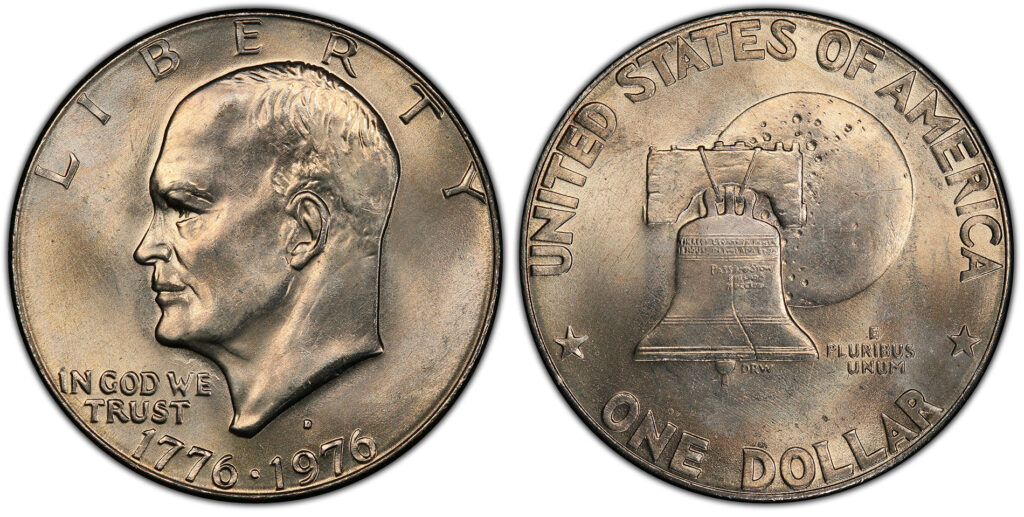
The dollars from 1776 to 1976 feature the letters DRW under the bell on the back.
So, the designer’s initials who won are right there next to the bell’s clapper.
The Ike dollar is a big coin that measures 1.5 inches or 38.1mm in diameter.
The coin has a thickness of 0.1 inches or 2.58mm.
The clad version weighs twenty-two point sixty-eight grams while the silver version weighs twenty-four point six two four grams. Coins with mistakes can be worth a lot.
If the machine operator misaligns the die, errors may occur during the minting process.
Doubling, tripling, or quadrupling the letters and images can occur.
Die errors are what we call them when they appear to blur or bleed over their edges.
Sometimes, the die itself gets damaged, and it transfers cracks and blemishes onto the coin batch, resulting in thousands of coins with imperfections.
Well, you see, when these dies have a flaw, they can produce a whole bunch of coins with the same mistake. And because of that, these batches of flawed coins are known as varieties, and they’re worth a different price.
Some of the errors found on coins are QDO (quadruple die obverse) and DDR (double die reverse), while some varieties may include S over D mint marks.
You might also notice double denomination errors in which the coin has an incorrect size.
This happens if you stamp a $1 coin on a 1c blank.
Planchets are what we call coin blanks.
Another quite noticeable error is when the coins are off-center, causing the image and letters only to cover a portion of the coin.
You might come across a coin with half an eagle or two overlapping bells, but they won’t fetch a high price if you try to sell them.
Grades
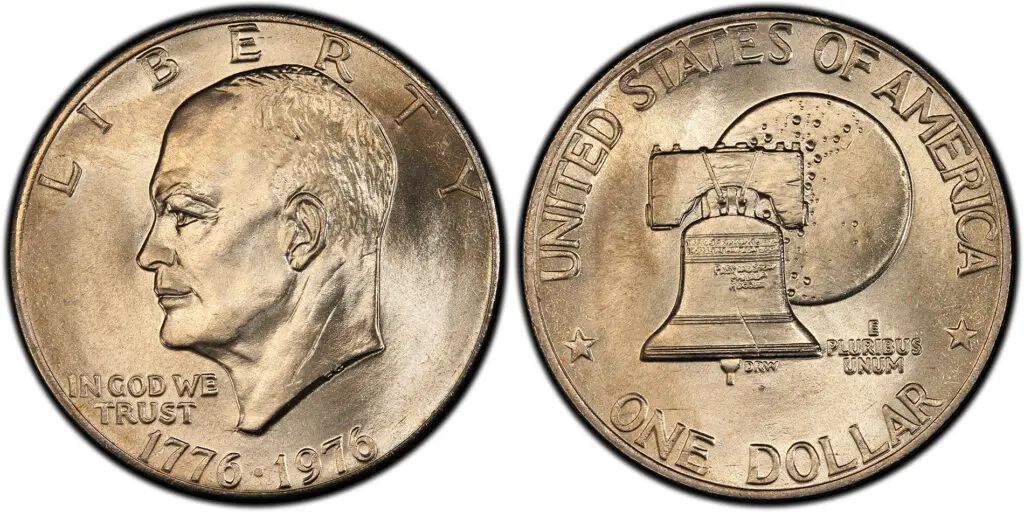
The Ike bicentennial dollars were minted in Denver with a D mint mark and in Philadelphia with no mint mark.
There are two variants of Philadelphia dollars. They are sometimes referred to as Type 1 and Type 2.
Type 1 has around 4 million coins minted, while Type 2 has over 113 million minted.
The reverse of Type 2 has slimmer serif lettering. This lettering style, my friends, boasts a stronger relief effect, with the writing raised just a touch.
Due to the difference in mintage, Type 1 Philadelphia coins tend to command a higher price in secondary markets.
Well, folks, we’ve got quite a few Denver dollars out there. We’re looking at around 21 million Type 1s and approximately 82 million Type 2s.
Well, folks, if you’re double-checking your change, it’s worth noting that Ike dollars without mint marks are given higher priority.
Well, folks, if you’re interested in bicentennial dollars, the going rate is typically between $20 to $40, depending on the coin’s condition.
Only San Francisco minted the Bicentennial silver dollar proofs.
They made close to 3 million Type 1s and a little over 4 million Type 2s.
They also produced approximately 5 million uncirculated silver proof coins at the San Francisco Mint.
The sets included a silver quarter, a 50-cent coin, and a dollar.
The rarest Ike proofs are those trial coins made by the winners at the Philadelphia Mint without any mint mark.
These are referred to as proofs as Spivack coins, which are expected to originate from San Francisco and bear an S mark.
It is believed that a few specimens were minted in Philadelphia around August 1974.
As you may already know, the Spivacks that were presented to dignitaries and officials, in addition to those awarded to the winners, are considered exceedingly rare and valuable.
So far, only one has been found.
You should start by checking your coin against a free photo grader like the one on the PCGS website.
If your coin appears to be a high grade, you might want to pay the membership fee and get your coin evaluated.
I’d like to inform you that the subscriptions for PCGS begin at $69, whereas for NGC, it starts at $25. Additionally, NGC offers free appraisals.
Before you go…
If you have a Bicentennial Dollar, it may be worth something. However, many common flaws in these coins make them less valuable than they could be. If you have any questions or concerns, leave them in the comment section! Happy Collecting!
Check out my next article: “Essential Guide To Eisenhower Dollar!“
Related Articles:

